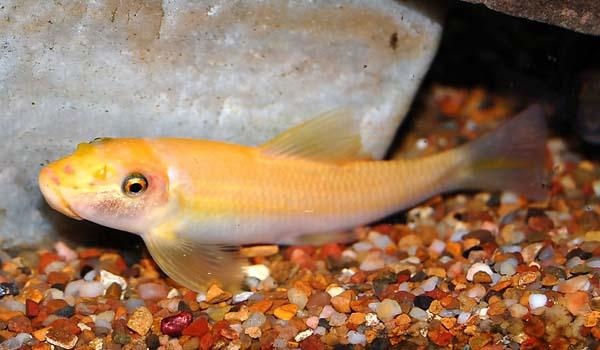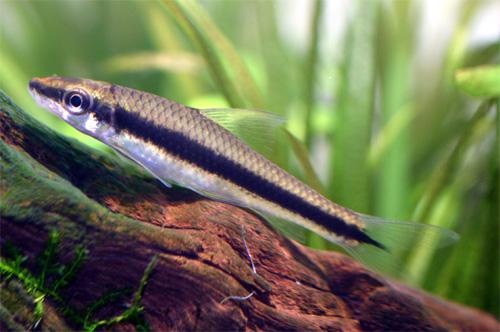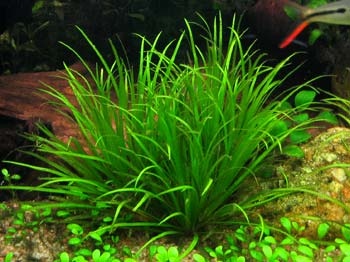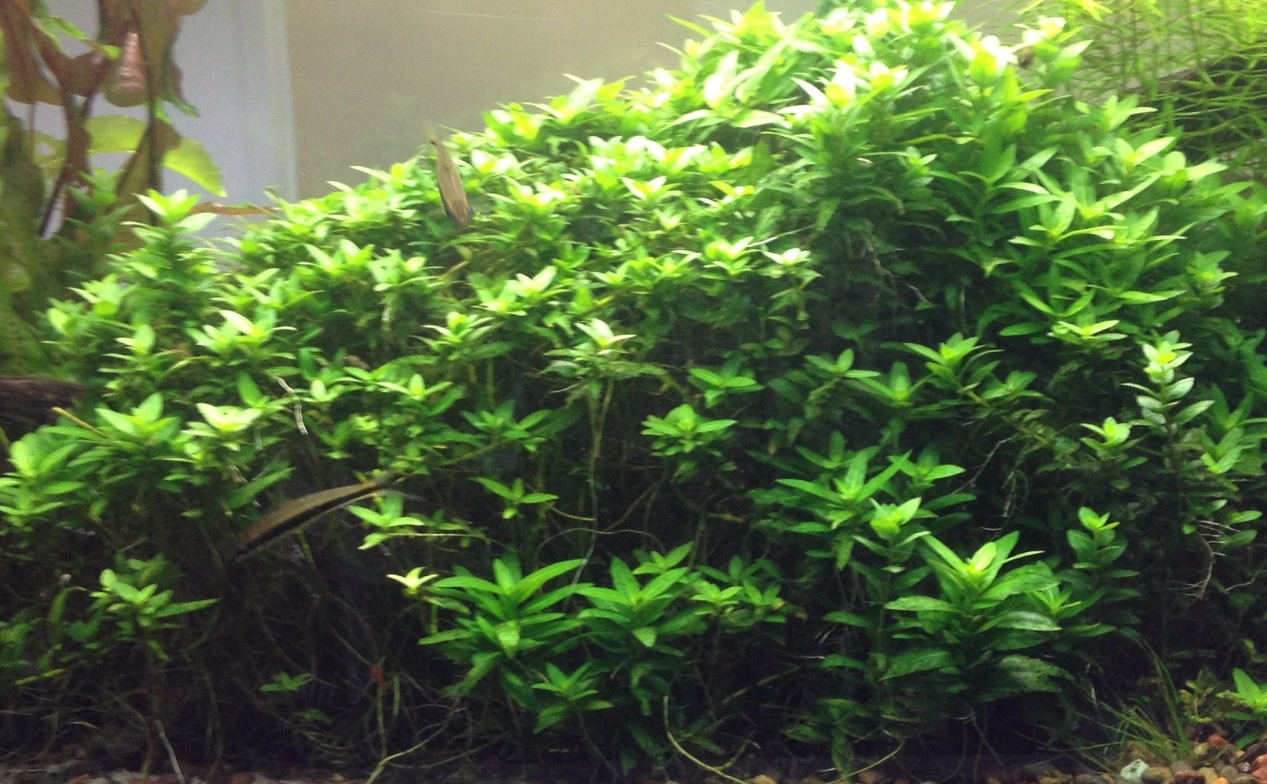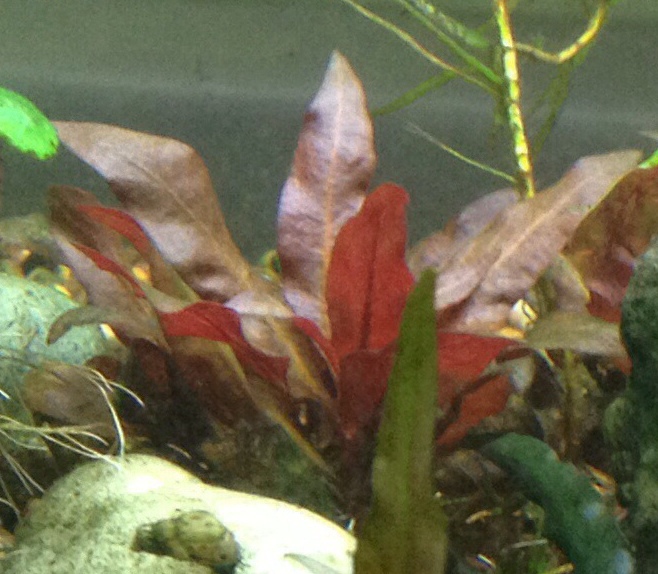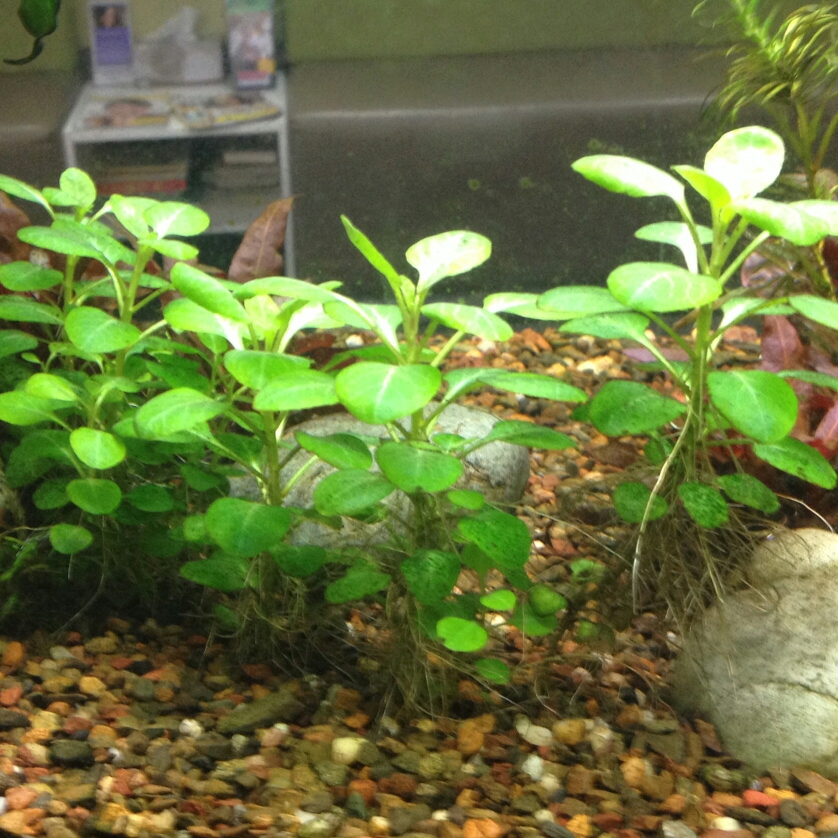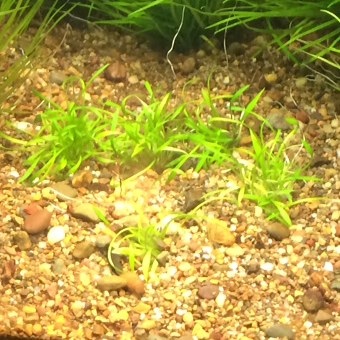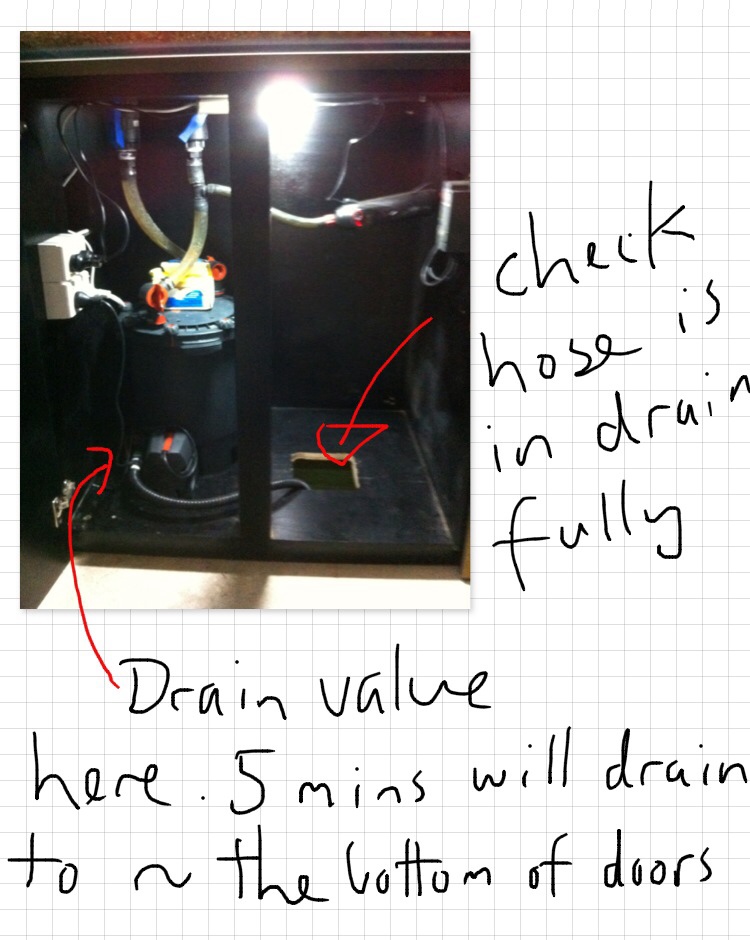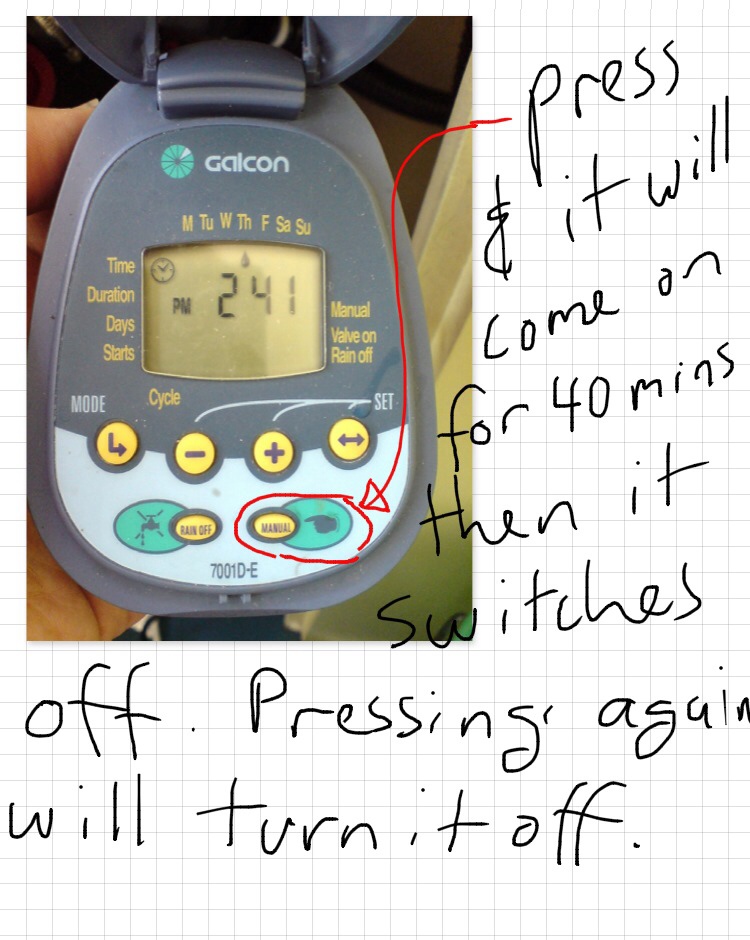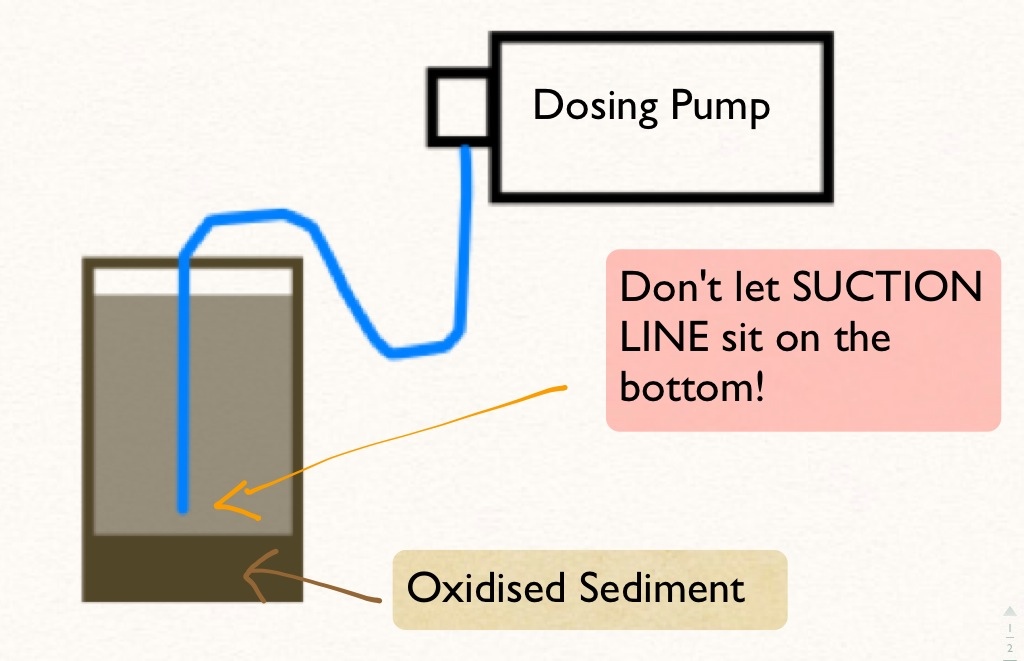Title Page
STARTERS
The Basics
-
Employee
- Alan
- Charles
- CK
- Steven
- Bruce
- Monty
- Marcus
- Janai
- Hadyn
-
Date
-
Time Started
Observations
FISH
-
Photos Before. 1-2 OVERALL. 2-3 CLOSEUPS on PLANTS
-
Peruvian Altum Angels (7) and Harlequin Rasboras (~50) Rummy-nose Tetras (30)
- Great; vibrant, eager for food
- some individuals not right.
- sulky, sluggish, isolated from group
- dead fish, cloudy stinky water
-
Take photos of individuals and check for CAUSES. Questions: 1. Is it just an individual or are many affected? 2. Check for uneaten food, levels of ammonia or nitrite. 3. Filter or heater stopped or malfunctioning?
-
Anything on BODY? <br>WHITE SPOTS?<br>FUNGUS?<br>WOUNDS?
-
Take PHOTO of cases and NOTE down details.
-
Plan for LARGE WATER CHANGE (75-90%) with thorough GRAVEL VAC. Use STRESS COAT and BLUE SALTS to guard against chlorine and infection.
-
CONTACT BRUCE IMMEDIATELY
-
Take PHOTO where possible and NOTE down details.
-
Looking good? Place a pinch of Tetrabits or a block of FROZEN FOOD in and observe how they eat.
The Workers: SUCKING CATS & FLYING FOXES
-
Show SUCKING CAT photo ====>
-
Sucking cats
-
SUCKING CAT/s sighted? (1-2)
-
Siamese Flying Fox (tap for picture)
-
Siamese Flying Fox
-
SIAMESE FLYING FOX/es sighted? (2-3)
-
How's the algae levels on GLASS & PLANTS?
- Lots of soft brown/green dust everywhere
- Very clear. A few spots on glass and old leaves
- Furry black algae growing on old leaves, pump, glass
- heavy with dark green spots on glass
- dark green algae all over rocks
-
This is an indication that there are no or low numbers of SIAMESE FLYING FOX. Mention in notes.
-
Remove as much as possible, prune old affected leaves off plants. Vacuum up loose pieces from after cleaning glass
-
This is possibly an indication that there are no SUCKING CATS. Mention in notes.
-
Check light TIMER and nitrate levels.
-
Plan for an "Adrian Special"; BEFORE draining, turn OFF pumps, scrape all of every glass surface and carefully brush clean all rocks Then drain 80% water.
PLANTS
-
BLYXA
-
BLYXA
-
How is the BLYXA looking?
- great. large, light green new growth. old growth slightly darker but still intact
- OK. medium quality new growth. not spreading but each piece is well rooted and old growth hasn't prematurely fallen off
- old leaves prematurely old. (may be also eaten off)
- poor. new growth short, dark and slow. old leaves perhaps eaten away. roots week
-
Great. Manage any over-growth (pushing up to glass, swamping other smaller plants) by thinning out and replanting to any thinner areas.
-
Possibly low in NITRATE and/or POTASSIUM (K) CHECK levels. (Section 4). 10ppm or more with still poor growth possibly means therefore not enough K and thus they are being starved. Contact Bruce for further instructions.
-
Possibly a deficiency in PHOS which is a mobile nutrient. If phos levels sufficient then possibly not enough K. check with BRUCE by SMS.
-
STAURAGYNE. (Tap for picture)
-
STAURAGYNE
-
How is the STAURAGYNE looking?
- good. healthy bright green star-shaped new growth
- new and old growth nibbled
- poor. old growth dark and nibbled and new growth small, slow, stunted
- curled/deformed new growth
-
New growth is the fish eating it! Clearly need to increase their green diet. Take photos and notify Bruce.
-
Possibly low in NITRATE and/or POTASSIUM (K) CHECK levels. (Section 4). 10ppm or more with still poor growth possibly means therefore not enough K and thus they are being starved. Contact Bruce for further instructions.
-
CURLED & DEFORMED new leaves? May have to review K dosage levels. Possibly too much. Do tests & check with BRUCE by SMS.
-
Great. Prune any healthy taller stems and replant to improve coverage of ground.
-
ALTERANTHERA. (Tap for picture)
-
ALTERANTHERA
-
How is the ALTERANTHERA looking?
- good. healthy bright green star-shaped new growth
- new and old growth nibbled
- poor. old growth dark and nibbled and new growth small, slow, stunted
- curled/deformed new growth
-
New growth is the fish eating it! Clearly need to increase their green diet. Take photos and notify Bruce.
-
Possibly low in NITRATE and/or POTASSIUM (K) CHECK levels. (Section 4). 10ppm or more with still poor growth possibly means therefore not enough K and thus they are being starved. Contact Bruce for further instructions.
-
CURLED & DEFORMED new leaves? May have to review K dosage levels. Possibly too much. Do tests & check with BRUCE by SMS.
-
Great. Prune any healthy taller stems and replant to improve coverage of ground.
-
LOBELIA (Tap for picture)
-
LOBELIA
-
How is LOBELIA looking?
- new growth, large and healthy green
- new leaves smaller than previous.
- old growth remaining healthy, ageing slowly
- old leaves prematurely ageing, falling off, leaving bare base stalk
- algae spots on old leaves
- leaves deformed and twisted
- stems getting a little high
-
CUT approx in half and, If healthy, reduce HEADLESS STALK by a further 50% and replant heads on front to hide the stalk.
-
Possibly low in NITRATE and/or POTASSIUM (K) or CO2 not working CHECK levels. (Section 4). 10ppm or more with still poor growth possibly means therefore not enough K and thus they are being starved. Check CO2 functioning properly. Contact Bruce for further instructions.
-
Great. Be sure to SHORTEN DOWN any that are getting too close to the tall
-
Premature ageing is possibly a deficiency in PHOS which is a mobile nutrient. If phos levels sufficient then possibly not enough K. check with BRUCE by SMS.
-
CURLED & DEFORMED new leaves? May have to review K dosage levels. Possibly too much. Do tests & check with BRUCE by SMS.
-
CRYPTS PARVA (tap for picture)
-
CRYPTS PARVA
-
How are the CRYPTS PARVA looking?
- shiny healthy deep green and strong new leaves,
- old leaves ageing well, minimum algae spots
- new leaves smaller than the older
- lots of algae spots on leaves
- deformed twisted leaves
- leaves weak and floppy, older leaves. spread out,
- prematurely aging, discoloured leaves
-
Possibly a deficiency in PHOS which is a mobile nutrient. If phos levels sufficient then possibly not enough K. check with BRUCE by SMS.
-
PEEL AWAY any old and ageing leaves from base
-
Possibly low in NITRATE and/or POTASSIUM (K) or CO2 not working CHECK levels. (Section 4). 10ppm or more with still poor growth possibly means therefore not enough K and thus they are being starved. Contact Bruce for further instructions.
-
CURLED & DEFORMED new leaves? May have to review K dosage levels. Possibly too much. Do tests & check with BRUCE by SMS.
-
Possibly a lack of K and/or CO2. Check nitrate and phos levels and check co2 system
-
Great. Peel away any old leaves that look on the way out
Tests part 1
Setup
-
Lay down drop sheets ESPECIALLY WHEN WORKING IN LOUNGE ROOM SIDE
-
Lift LIGHT UNITS up for working space. If doing large work (plant removals and other potentially messy things) lay down canvas drop sheet (folded in half, length ways) along the front of the tank)
-
If you come BEFORE the lights come on (2.30pm) then you will need to have some WORKING LIGHT. Use the plug from socket "D" and move it to a free power point above to manually turn one set of lights on. Tipp: though for LOOKING FOR ALGAE on the walls it's best to have LIGHTS OFF
Tests part 1
-
TEMPERATURE test (ideal 27 - 28.5 C)
-
A bit too cool. Are INLINE HEATERS functioning/plugged in? (2 on right filter, 1 on left)
-
Unplug faulty unit. Notify Bruce to arrange replacement.
-
Increase THERMOSTAT on the heater whose thermostat is switching off at a lower temp by the SUITABLE AMOUNT to bring it up within the range (see above) and make note of how much.
-
Increased THERMOSTAT by:
-
too warm. Are THERMOSTATS on heaters functioning? <br>(Does the indicator light come on and off when you turn the thermostat setting up and down?)
-
Decrease THERMOSTAT (anticlockwise) on the highest set heater by the SUITABLE AMOUNT to bring it down within the range (see above) and note by how much.
-
Decreased THERMOSTAT by:
-
if the THERMOSTAT doesn't respond to being turned down then better to have a cool tank than risking cooking the fish. Unplug faulty unit. Notify Bruce to arrange replacement.
-
Good. Refill with HEATER or KETTLES OF BOILED WATER (boiling water tap in kitchen) in COLD months.
-
Rinse 4 TEST VIALS in tank water: pH (square vial) and GH (large round vial) NITRATE & PHOS (small glass) MEASURE 5ml in each and SET ASIDE for later. Tip: use SQUARE VIAL or a SYRINGE to measure an accurate 5ml for the GH.
The Drain
The Drain (50%)
GRAVEL VACUUM (only for special occasions.) NB: if plants are doing well, then leave. It's good food for them!
-
Gravel vacuum?
-
How dirty was it?
FAST DRAIN
-
Open DRAIN VALVE (pic below) NB set timer for about 5-10 mins. Its easy to get distracted with other things and forget! MAKE SURE YOU CLOSE IT PROPERLY AT END. IF UNSURE, LIFT HISE OUT OF DRAIN TO CONFIRM IT HAS STOPPED!
-
Drain Valve diagram
-
The Refill
The Refill
-
Press manual button (finger symbol) on GALCON controller. See pic below. NB check on again later. It will probably need another go as 40 mins may not be enough. TIPP: if it is only 5 -10 mins remaining on the timer then you can stop and restart to bring up another 40 mins.
-
MANUAL SETTING ON CONTROLLER diagram ==>
-
CONTROLLER MANUAL TIMED REFILL
-
SOUP HEATER in COLD months or in large water changes. REMEMBER: always plug into WALL OUTLET. Mount on a slight angle over the FLOAT SWITCH ASSEMBLY so the heating element hangs in the middle OPEN SPACE, away from glass and plants.
Things To Do During Refill
-
CLEAN GLASS; easiest at LOW WATER LEVELS. SOFT ALGAE lightly with MAGNET CLEANER (MAKE SURE BOTH SIDES ARE SUPER CLEAN FIRST!!). Even if you can't see any, best to do a light pass over the whole thing. DARK GREEN spots: best with SCRAPER.
-
Work on PLANTS
-
FILTER SERVICE?
-
Which one?
-
Tap here for instructions ====>
-
INSTRUCTIONS: UNDER CONSTRUCTION.
Tests (continued)
-
pH Test? 3 drops in 5ml. (ideal pre CO2 range 6.5-7)
-
ADD approx 2 tsp CORAL SAND.
-
ADD approx 3 tsp CORAL SAND
-
ADD approx 4 tsp CORAL SAND
-
Is this expected? Been a recent large dose of coral sand last time?<br>CO2 started.
-
Rinse test tube thoroughly and retest. (Any traces of ammonia or GH tester solution will give a false alkaline reading)
-
WOAH! Unlikely! Rinse test tube thoroughly and retest. (Any traces of AMMONIA TEST or GH TEST solutions will give a false alkaline reading) If still high then we must assume that there has been an excess amount of coral sand and all we can do is water change. It will eventually come down as the coral sand dissolves.
-
GH TEST. number of drops to turn from ORANGE to GREEN
-
SIZE of water change:
-
ADD 1 Measure spoon GH POWDER
-
ADD 2 Measure spoon GH POWDER
-
SIZE of water change:
-
ADD up to 1 Measure spoon GH POWDER
-
ADD up to 2 Measure spoons GH POWDER
-
ADD up to 3 Measure spoons GH POWDER
-
Depending on SIZE of WATER CHANGE, add NO SALTS and let WC reduce the GH to within desired range
-
NITRATE TEST
-
Depending on state of plants, this is POSSIBLY grounds for increase in BASIC-GRO dose. Contact Bruce for further instructions.
-
GENERALLY this is the OPTIMUM RANGE. HOWEVER if there is POOR PLANT GROWTH observed then possibly means therefore not enough K and thus they are being starved. Contact Bruce for further instructions.
-
Has the BASIC-GRO PUMP dosed already today? (2:30pm)- Note, this dosing pump is programmed for every 2nd day, so it will change from week to week.<br>If so then this will contribute to a higher nitrate reading
-
Almost certainly and LACK of POTASSIUM and/or OVER DOSE of BASIC-GRO. Are DOSING PUMPS for K and BG well primed and unblocked?
-
Done a calibration of the PUMPS recently? (In the last 5months)
-
Look at INCREASING DAILY-GRO (it contains potassium also) or POTASSIUM dose. Consult Bruce
-
Do a BASIC-GRO CALIBRATION: <br>QUESTION: did it dose MORE or LESS than the volume displayed at the end of the calibration?
-
By how much?
- 1ml
- 2ml
- 3ml
- 4ml
- 5ml
- more than 5 ml
-
Input correct volume and test with a 10ml ADJUSTMENT DOSE into test vial. This will effectively decrease the BASIC-GRO DOSE.
-
Input correct volume and test with a 10ml ADJUSTMENT DOSE into test vial.
-
By how much?
- 1ml
- 2ml
- 3ml
- 4ml
- 5ml
- more than 5 ml
-
Input correct volume and test with a 10ml ADJUSTMENT DOSE into test vial.
-
Input correct volume and test with a 10ml ADJUSTMENT DOSE into test vial. Decrease
-
Look at INCREASING DAILY-GRO (it contains potassium also) or POTASSIUM dose. Consult Bruce
-
Give details of problem
-
If after fixing the problem, you're not convinced this was sufficiently causing problems in dosing of K and/or DAILY-GRO then CONTACT Bruce to discuss.
-
PHOSPHATE TEST
-
GENERALLY this is the OPTIMUM RANGE. Some say 1/10th of the nitrate level. HOWEVER if there is POOR PLANT GROWTH observed then possibly means therefore not enough K and thus they are being starved. Contact Bruce for further instructions.
-
Only phosphate source here is the fish food. Perhaps an increase in K dose will help. Make follow up note and discuss with Bruce later
-
Is there premature aging/falling off of leaves on any of the plants?
-
Only phosphate source here is the fish food. Perhaps a manual liquid dose or increase in feeding . Make follow up note and discuss with Bruce later
-
Then don't worry about it. Enjoy algae-free aquarium maintenance!
Additives
-
GH UP POWDER ADDED?
-
How many measured spoons?
-
Coral sand added? (Low pH)
-
How many teaspoons?
DOSING PUMP
TRACE & IRON
-
Any AIRLOCKS to bleed out?
TEST THE LINE
-
Be sure to use a CONTAINER (GH test vial eg.) to catch the liquid while priming the line.
-
TEST LINES; Manual Dose ==> press BUTTON to the RIGHT OF EACH PUMP HEAD Only do as much as a couple of drops. IMPORTANT: DAILYGRO must be tested with a container to catch test fluid as it is too concentrated. PHOS, BASIC-GRO and K are ok in small amounts.
-
Liquid moving through the line?
-
Is the SUCTION LINE immersed in the liquid?
-
Is it an OBSTRUCTION in the line caused by oxidised minerals from the liquid (typically DAILY-GRO)?
-
Remove SUCTION LINE from PUMP HEAD and WASH in hot water, massage or blow out the blockage and RE-ATTACH to PUMP HEAD.
-
IMPORTANT: the SUCTION LINE must NOT be sitting on the bottom of the SUPPLY BOTTLE. The supply bottles here are deliberately NOT DIRECTLY BELOW THEIR RESPECTIVE PUMPS in order to allow ease of refilling and accessing the control panel so the SUCTION LINES are quite long.
If unsure, SIMULATE it's position outside, next to the supply container. -
WASH OUT the supply bottle. If there is reasonable amount of liquid still in it then gently DECANTER the clear liquid into a second container. As soon as it is no longer clear STOP (in the case of DAILY-GRO it goes from tea coloured to thick brown). WASH OUT SLUDGE and return the clear liquid to the bottle.
-
Where and how big was the airlock in the TRACE & IRON line?
PRIME/BLEED THE LINE
-
Be sure to use a CONTAINER (GH test vial eg.) to catch the liquid while priming the line.
-
TEST LINES; Manual Dose ==> press BUTTON to the RIGHT OF EACH PUMP HEAD Only do as much as a couple of drops. IMPORTANT: DAILYGRO must be tested with a container to catch test fluid as it is too concentrated. PHOS, BASIC-GRO and K are ok in small amounts.
-
Liquid moving through the line?
-
Is the SUCTION LINE immersed in the liquid?
-
Is it an OBSTRUCTION in the line caused by oxidised minerals from the liquid (typically DAILY-GRO)?
-
Remove SUCTION LINE from PUMP HEAD and WASH in hot water, massage or blow out the blockage and RE-ATTACH to PUMP HEAD.
-
IMPORTANT: the SUCTION LINE must NOT be sitting on the bottom of the SUPPLY BOTTLE. The supply bottles here are deliberately NOT DIRECTLY BELOW THEIR RESPECTIVE PUMPS in order to allow ease of refilling and accessing the control panel so the SUCTION LINES are quite long.
If unsure, SIMULATE it's position outside, next to the supply container. -
WASH OUT the supply bottle. If there is reasonable amount of liquid still in it then gently DECANTER the clear liquid into a second container. As soon as it is no longer clear STOP (in the case of DAILY-GRO it goes from tea coloured to thick brown). WASH OUT SLUDGE and return the clear liquid to the bottle.
-
Check that the CONNECTIONS between PUMP and FEEDER lines are well secure. If necessary, REMOVE feeder line, snip of tip with scissors and SOAK new tip in hot water to soften and REFIT.
-
Test CHECKVALVE. Blow air thru both ends. Should only let you in one direction. If it flows in both directions (or indeed none!) a paper clip wire or similar lightly poked into the rubber valve from both ends can fix this. Otherwise make note to replace valve.
-
Clean CHECK VALVES/ENDS OF LINES of dried/calcified buildup. They should be just hanging over the SUPPORT STRIP of glass and above the water line.
NITROGEN
-
Any AIRLOCKS to bleed out?
TEST THE LINE
-
Be sure to use a CONTAINER (GH test vial eg.) to catch the liquid while priming the line.
-
TEST LINES; Manual Dose ==> press BUTTON to the RIGHT OF EACH PUMP HEAD Only do as much as a couple of drops. Extra doses of Basic-gro is ok in small amounts.
-
Liquid moving through the line?
-
Is the SUCTION LINE immersed in the liquid?
-
Is it an OBSTRUCTION in the line caused by oxidised minerals from the liquid (typically DAILY-GRO)?
-
Remove SUCTION LINE from PUMP HEAD and WASH in hot water, massage or blow out the blockage and RE-ATTACH to PUMP HEAD.
-
IMPORTANT: the SUCTION LINE must NOT be sitting on the bottom of the SUPPLY BOTTLE. The supply bottles here are deliberately NOT DIRECTLY BELOW THEIR RESPECTIVE PUMPS in order to allow ease of refilling and accessing the control panel so the SUCTION LINES are quite long.
If unsure, SIMULATE it's position outside, next to the supply container. -
WASH OUT the supply bottle. If there is reasonable amount of liquid still in it then gently DECANTER the clear liquid into a second container. As soon as it is no longer clear STOP (in the case of DAILY-GRO it goes from tea coloured to thick brown). WASH OUT SLUDGE and return the clear liquid to the bottle.
-
Where and how big was the airlock in the NITROGEN line?
PRIME/BLEED THE LINE
-
Be sure to use a CONTAINER (GH test vial eg.) to catch the liquid while priming the line.
-
TEST LINES; Manual Dose ==> press BUTTON to the RIGHT OF EACH PUMP HEAD Only do as much as a couple of drops. Extra doses of Basic-gro is ok in small amounts.
-
Liquid moving through the line?
-
Is the SUCTION LINE immersed in the liquid?
-
Is it an OBSTRUCTION in the line caused by oxidised minerals from the liquid (typically DAILY-GRO)?
-
Remove SUCTION LINE from PUMP HEAD and WASH in hot water, massage or blow out the blockage and RE-ATTACH to PUMP HEAD.
-
IMPORTANT: the SUCTION LINE must NOT be sitting on the bottom of the SUPPLY BOTTLE. The supply bottles here are deliberately NOT DIRECTLY BELOW THEIR RESPECTIVE PUMPS in order to allow ease of refilling and accessing the control panel so the SUCTION LINES are quite long.
If unsure, SIMULATE it's position outside, next to the supply container. -
WASH OUT the supply bottle. If there is reasonable amount of liquid still in it then gently DECANTER the clear liquid into a second container. As soon as it is no longer clear STOP (in the case of DAILY-GRO it goes from tea coloured to thick brown). WASH OUT SLUDGE and return the clear liquid to the bottle.
-
Check that the CONNECTIONS between PUMP and FEEDER lines are well secure. If necessary, REMOVE feeder line, snip of tip with scissors and SOAK new tip in hot water to soften and REFIT.
-
Test CHECKVALVE. Blow air thru both ends. Should only let you in one direction. If it flows in both directions (or indeed none!) a paper clip wire or similar lightly poked into the rubber valve from both ends can fix this. Otherwise make note to replace valve.
-
Clean CHECK VALVES/ENDS OF LINES of dried/calcified buildup. They should be just hanging over the SUPPORT STRIP of glass and above the water line.
-
ADJUSTMENT DOSE: has the basic gro dosed before the water change?
-
Make ADJUSTMENT DOSE at a % corresponding to size of water change. Eg. 50% water change = 1/2 of programmed dose. It will ask you to confirm.
-
No macros dosed today so no adjustment necessary.
POTASSIUM
-
Any AIRLOCKS to bleed out?
TEST THE LINE
-
TEST LINES; Manual Dose ==> press BUTTON to the RIGHT OF EACH PUMP HEAD As long as not excessive, extra doses of K is ok
-
Liquid moving through the line?
-
Is the SUCTION LINE immersed in the liquid?
-
Is it an OBSTRUCTION in the line caused by oxidised minerals from the liquid (typically DAILY-GRO)?
-
Remove SUCTION LINE from PUMP HEAD and WASH in hot water, massage or blow out the blockage and RE-ATTACH to PUMP HEAD.
-
IMPORTANT: the SUCTION LINE must NOT be sitting on the bottom of the SUPPLY BOTTLE. The supply bottles here are deliberately NOT DIRECTLY BELOW THEIR RESPECTIVE PUMPS in order to allow ease of refilling and accessing the control panel so the SUCTION LINES are quite long.
If unsure, SIMULATE it's position outside, next to the supply container. -
WASH OUT the supply bottle. If there is reasonable amount of liquid still in it then gently DECANTER the clear liquid into a second container. As soon as it is no longer clear STOP (in the case of DAILY-GRO it goes from tea coloured to thick brown). WASH OUT SLUDGE and return the clear liquid to the bottle.
-
Where and how big was the airlock in the POTASSIUM line?
PRIME/BLEED THE LINE
-
TEST LINES; Manual Dose ==> press BUTTON to the RIGHT OF EACH PUMP HEAD As long as not excessive, extra doses of K is ok
-
Liquid moving through the line?
-
Is the SUCTION LINE immersed in the liquid?
-
Is it an OBSTRUCTION in the line caused by oxidised minerals from the liquid (typically DAILY-GRO)?
-
Remove SUCTION LINE from PUMP HEAD and WASH in hot water, massage or blow out the blockage and RE-ATTACH to PUMP HEAD.
-
IMPORTANT: the SUCTION LINE must NOT be sitting on the bottom of the SUPPLY BOTTLE. The supply bottles here are deliberately NOT DIRECTLY BELOW THEIR RESPECTIVE PUMPS in order to allow ease of refilling and accessing the control panel so the SUCTION LINES are quite long.
If unsure, SIMULATE it's position outside, next to the supply container. -
WASH OUT the supply bottle. If there is reasonable amount of liquid still in it then gently DECANTER the clear liquid into a second container. As soon as it is no longer clear STOP (in the case of DAILY-GRO it goes from tea coloured to thick brown). WASH OUT SLUDGE and return the clear liquid to the bottle.
-
Check that the CONNECTIONS between PUMP and FEEDER lines are well secure. If necessary, REMOVE feeder line, snip of tip with scissors and SOAK new tip in hot water to soften and REFIT.
-
Test CHECKVALVE. Blow air thru both ends. Should only let you in one direction. If it flows in both directions (or indeed none!) a paper clip wire or similar lightly poked into the rubber valve from both ends can fix this. Otherwise make note to replace valve.
-
Clean CHECK VALVES/ENDS OF LINES of dried/calcified buildup. They should be just hanging over the SUPPORT STRIP of glass and above the water line.
CO2 SYSTEM. To test before 2:15 pm when it is programmed to come on, switch main POWERBOARD to MAN. This will turn on all lights, the KORALIA PUMP and the CO2. DON'T FORGET TO RETURN IT TO AUTO!!!
-
Bubble rate good?
-
Bottle empty? Or out of programmed time? Or some other issue?
-
Put temporary small bottle on line and make follow up for Bruce to order new large supply bottle
-
DECREASE by turning the INLINE FINE ADJUSTMENT on the PRESSURE VALVE ASSEMBLY
-
INCREASE by turning the INLINE FINE ADJUSTMENT on the PRESSURE VALVE ASSEMBLY
-
If opening up the the fine adjustment valve doesn't work to INCREASE IT then it maybe the bottle is low so replace. Disconnect and install spare bottle in cupboard and make follow up field for Bruce to order a new bottle
-
Fine gas bubbles coming out in INLINE DIFFUSER ? (Hint: hold torch light agains the side to see)
-
Close off RETURN VALVE 2 completely to send all flow through diffuser.
-
Does this fix it?
-
Then OPEN VALVE to previous half-closed position. If the main return from the filter is reduced TOO MUCH then look cleaning FILTER.
-
Plan for a Service to DIFFUSER. Turn off PUMP and close all VALVES. Turn off CO2 gas. Unscrew BOTTOM CAP of diffuser to drain water out. Pull out INNER SHAFT ASSEMBLY with pliers. Take note of ORDER AND ORIENTATION OF IMPELLER PIECES! Clean and check for rough edges (use fine sand paper to smooth out any rough edges) Clean INSIDE WALL OF CYLINDER with paper towel. REASSEMBLE AND prime by turning on PUMP with VALVE 2 completely closed to FLUSH OUT air.
Packing up
SUPPLIES; ANY REFILLING TO BE DONE IN SINK OR OUTSIDE!
-
GH UP REPLACE?
-
FOOD REPLACE/ REFILL? (Tetrabits, frozen food)
-
WHICH KIND?
- TETRABITS
- DISCUS PELLETS
- FROZEN FOOD
-
Will any need replacing next month?
- TETRABITS
- DISCUS PELLETS
- FROZEN FOOD
LIQUID FERTS (Dosing Pump)
-
NITROGEN refill?
-
HOW MUCH IS LEFT?
-
THIS IS DEFINITELY NOT ENOUGH TO LAST! Refill within the week
-
Bring some next time as almost definitely will need some.
-
How much?
-
TRACE & IRON refill?
-
HOW MUCH IS LEFT?
-
THIS WON'T BE ENOUGH TO LAST.
-
Bring some next time as almost definitely will need some.
-
POTASSIUM supply refill? <br> (If wishing to replace but still a small amount remains in CURRENT BOTTLE, swap over and leave OLD BOTTLE behind and can pour in rest into the new bottle at a later date)<br>
-
How much?
-
HOW MUCH IS LEFT?
-
THIS IS PROBABLY NOT ENOUGH TO LAST. Refill within the week
-
Auto feeder topped up? Tetrabits in one of the hoppers (I forget which. The one that has traces of tetrabits in it)
Equipment Check
-
Correct time on controller (mounted on wall below dosing pumps)?
-
Contact Bruce
-
LIGHTS: all tubes working? (They are staggered in the program so switch power board to MANUAL to test all)
-
Details
-
DOSING PUMP returned to operation display?
-
If you have lifted the LIGHTS then gently lower them back down to the height you found them
-
Notes. Any extra work performed? Any additions of fish? Any questions...?
FINAL CHECKS
-
HEATER and FILTER PUMPS ON and functioning?
-
OUTSIDE GLASS, CABINETRY etc CLEAN & DRY?
-
Finished (or close to) refilling? Check the remaining time on the REFILL TIMER and if more than 5 mins then close off. You can leave it to overflow a little. But we don't want to chill the tank too much
-
MOST IMPORTANT: were the lights OFF when you arrived?
-
HAVE YOU OVER-RIDDEN ONE THE LIGHTS (plugged into another power point) TO BE ABLE TO WORK? Then you MUST RETURN THE PLUG TO THE MAIN POWER BOARD!! Lights are programmed to come on around 2.30pm
-
POWER BOARD SET TO "AUTO"?
-
MOST IMPORTANT #2: is the DRAIN PROPERLY CLOSED? Check the end of the drain hose to confirm nothing flowing out. The tap should be vertical.
-
WORKLIGHTS IN CUPBOARDS TURNED OFF?
-
Got your: BASKET STRAINER? TOOTH BRUSH? TEASPOON?
-
Photos After. 1 x OVERALL. Both sides, 2 half shots CLOSEUPS of any REARRANGED PLANT.
-
Time Finished






